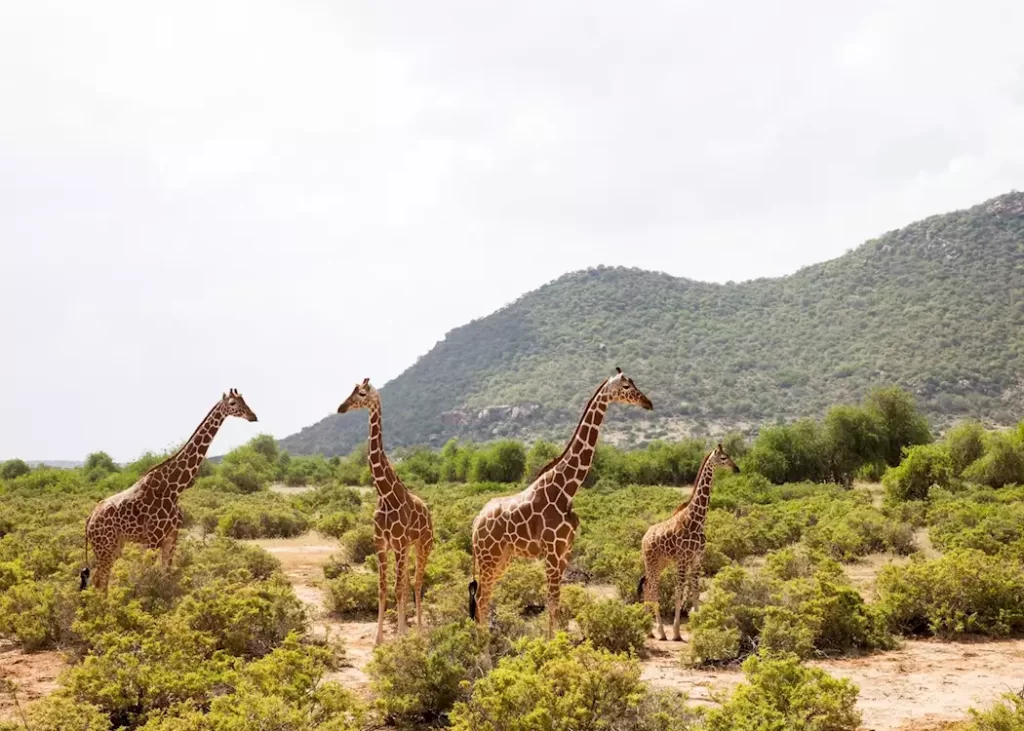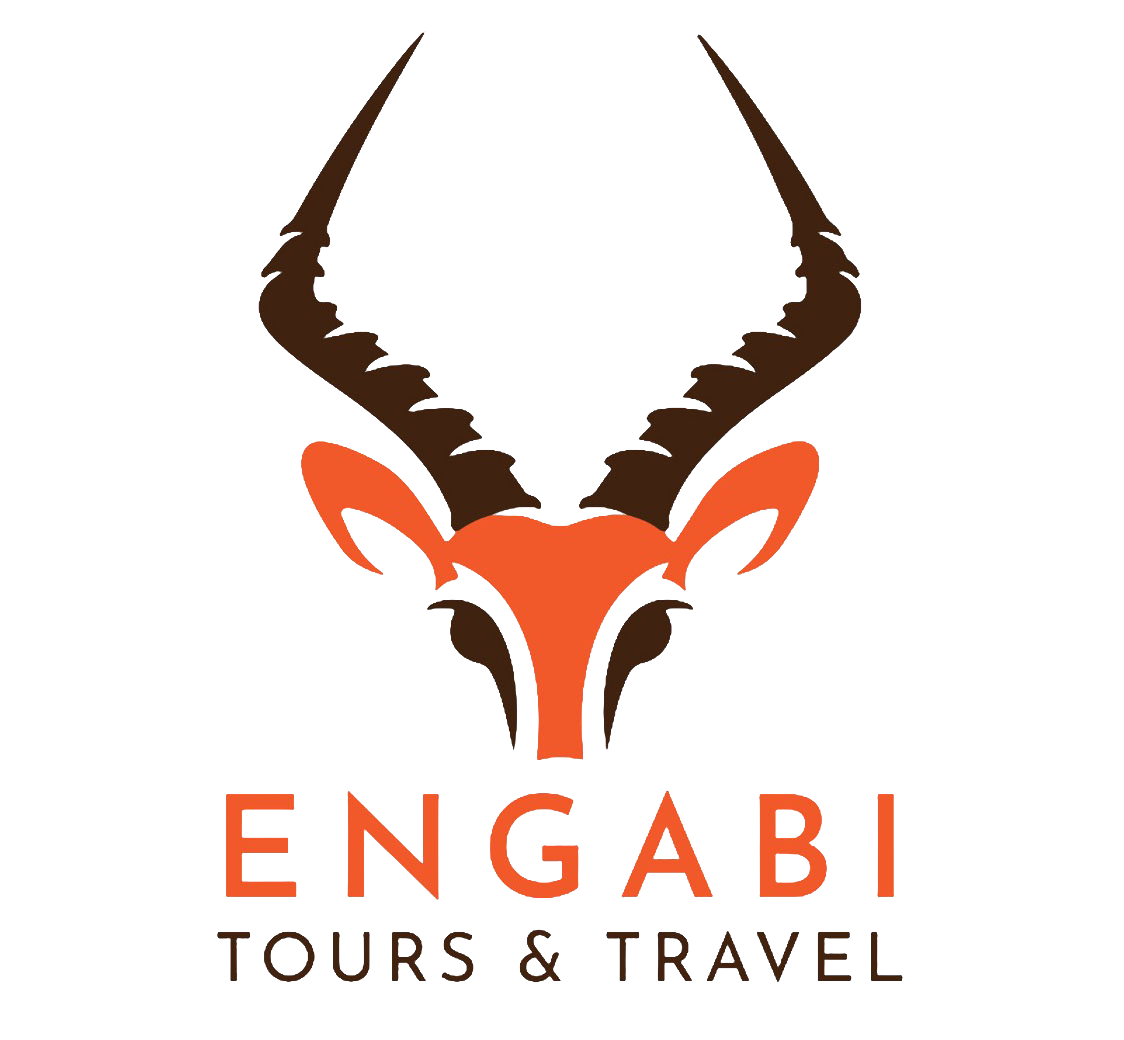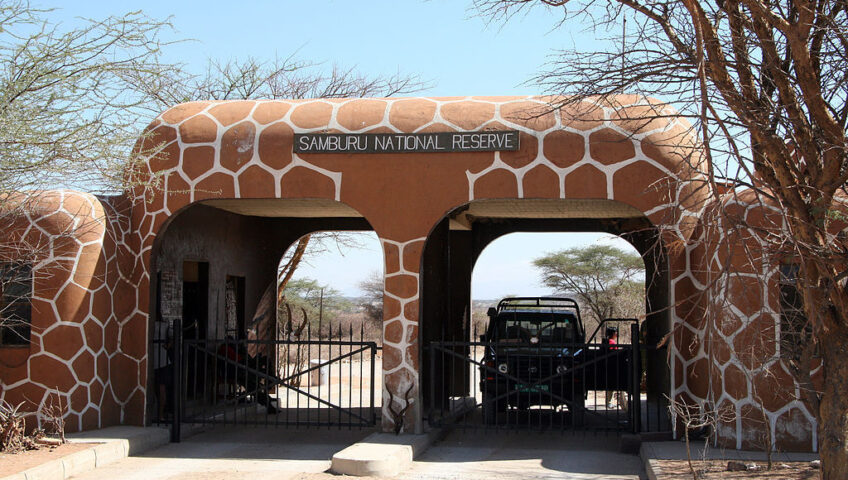Samburu National Reserve is home to some of Africa’s rarest and most distinctive wildlife, including the Somalia Ostrich, Beisa, Oryx, Gravy zebra, Reticulated giraffe, and Gerenuk. The Samburu National Reserve’s picturesque environment is a result of the region’s semi-arid ecosystem and riverine forest. The reserve is a sizable area of distant, untouched wilderness that is home to a haven of wildlife and is situated in one of Kenya’s less visited districts, Samburu County, to the north of Laikipia. It serves as a true wilderness experience.
The serene Ewaso Nyiro River, the largest river in northern Kenya, flows through the barren Sambura region. That satisfies the thirst of the diverse fauna that lives in the reserve. In this instance, the Sambura people were drawn to the area by the reserve’s dependable water source, which supplies water for their cows. Keep in mind that the river Ewaso Nyiro supports Shaba National Reserve, Buffalo Springs National Reserve, and Samburu National Park.
The Ewaso Ng’iro river, which runs through the reserve and is known for its “brown water,” as well as the blend of acacia, thorn trees, riverine forest, and grassland vegetation, are the main draws for a variety of species. This river offers the best opportunity for game viewing in the reserve, which is home to herds of elephants, antelopes, gazelles, zebras, giraffes, leopards, oryx, Somali ostriches, gerenuk, Gravy’s zebras, and reticulated giraffes, as well as an abundance of monkeys, crocodiles, and different species of birds.
Being one of the two places where renowned George and Joy Adamson environmentalists raised Elsa the Lioness made it a successful book on African tourism due to its pristine wilderness. It is also well-known as the residence of Kamunyak, a lioness well-known for taking in Oryx calves. But this game reserve, which was made a national reserve in 1985, is located in Kenya on the banks of the Ewaso Ng’iro river and covers an ecosystem area of roughly 165 square kilometers.
Samburu National Reserve hosts a wide variety of animals and bird life which attracts millions of visitor who tend to visit the reserve on their African safari and Kenya’s northern plains can be seen in abundance here, including gerenuk, Oryx, Gravy’s Zebra and Reticulated giraffe, all the three big cats, African leopard, lions, cheetah can also be sighted here, as well as cape buffalo, elephants and hippopotamus. Warthogs, Grant’s gazelles, Olive baboons, Kirk’s dik-diks, waterbuck, and impala are among the other creatures that may be seen in the park. A handful of black rhinoceroses have also been reintroduced into the reserve after a 25-year absence owing to excessive poaching, rewarding it with fantastic game viewing.
The reserve is also a birding tourist destination with over 350 species of birds which can be spotted and some of species include; grey-headed kingfisher, bee-eaters, Marabou stork, bateleur, Verreaux’s eagle, yellow-necked spur fowl, Vultures, secretary bird, superb starling, lilac-breasted roller, northern red-billed hornbill, yellow-billed hornbill, palm-nut vulture among others which can make your birding tour admirable.
A clan of the Maasai that reside near the park, the Sambura tribe is one of the smallest Kenyan safari reserves and is surrounded by villages of Borana, Rendiles, and dominant Sambura tribe who herd their cattle in the reserve. Their culture and norms are considerably different from those of other communities.
Attractions in Samburu National Reserve
River Ewaso Nyiro
As it runs from north to east through to southeast through Somalia to link with the river Jubba, this is one of Kenya’s largest rivers and a vital supply of water for the Samburu’s animals and gorgeous riverine forest.Huge populations of Nile crocodiles find refuge in the River Ewaso Nyiro, which is also the ideal place to see wildlife because many mammals come here to drink.
Big three cats
Three big cats—leopards, lions, and cheetahs—call the reserve home, making Samburu a well-known wilderness safari destination. They can best be found along the banks of the Ewaso Nyiro river, which links for water.
Samburu Culture
In this safari location, you can go in search of animals but end up learning about the fascinating Samburu culture and interacting with their lovely customs. The Samburu people are well renowned for their propensity to herd livestock, and when tourists arrive, they can ride camels. True to African heritage, they dress in a distinctive manner, painting vivid designs on their faces to draw attention to their attractive facial characteristics. Noting that Samburu means butterfly, many tourists who visit the reserve are appreciating.
Camelback Rides
This is a really cool African safari experience since you get to ride camels through the stunning nature of Samburu National Reserve. It appears to be conventional but is actually the simplest approach to explore the reserve and get closer to the mammals there.
Samburu Special Five
Samburu National Reserve is well-known for its special fives, including reticulated giraffes, gerenuks, Somali ostriches, grey zebras, and Beisa oryx. These animals are uncommon on other African safaris and are best viewed here during game drives and nature walks. These species can be found in riverine forests and wide savannah grasslands.
Riverine forest
The area inside the reserve appears to be greenish, and there is an intriguing cool breeze that draws numerous bird species. Among the bird species you may see are the Bateleur, Vulturine Guinea Fowl, Yellow-necked Spurfowl, Sunbird, Bee-eaters, Marabou stork, Tawny Eagle, and Verreaux’s Eagle, among others.
Mount Koitar and Mount Ololokwe
The park is made more intriguing by these mounts that are located in the center of the reserve. Many little animals can be seen resting on them, and the vista is rewarding and the photography is highly memorable.
The reserve’s natural beauty, the Reteti Elephant, and the elephant watch camp are further visitor draws.
Activities in the Samburu National Reserve
The wonderful experience that visitors to Sambura National Reserve can have is listed below as follows:
Game Drives
While full-day game drives are the finest way to experience how the wildlife survive, eat, and relax, game drives are a special safari activity that are best done early in the morning while animals are still active and may be the appropriate time to search for their meals. The Ewaso Nyiro River is one of the greatest places in the reserve to observe these wildlife species, which include the special fives of the Beisa Oryx, Somali Ostrich, Gravy’s Zebra, Reticulated Giraffe, and Gerenuk.There are numerous other species, such as elephants, lions, and leopards. We encourage visitors to Sambura to always take a wildlife drive in a 4×4 safari vehicle and to always hire a guide.

Bush Breakfast
The Samburu National Reserve offers a wonderful and unforgettable experience because you may witness wildlife up close while taking in a delicious breakfast or meal in the Samburu wilderness.
Camel Ride Safari
You can explore the park in a distinctive, traditional way by mounting a camel and riding into the Samburu wilderness. Consequently, you will get the chance to explore the park’s surroundings, which include lovely landscape and a significant population of elephants along with other species.
Mount biking
This exciting activity, which is also carried out in the Samburu National Reserve, involves using motorcycles to explore the area and is rewarded with breathtaking views of the diverse wildlife, vegetation, bird watching, and big cat tracking.
Bird Watching
Samburu National Reserve is home to over 350 different bird species, making it a birdwatcher’s paradise. Some of the species that can be seen there include the yellow-necked spur fowl, yellow-billed hornbill, palm-nut vulture, grey-headed kingfisher, bee-eaters, Marabou stork, Vulturine Guinea fowl, Secretary bird, Bateleur, sunbirds, and lilac-breasted roller.
Samburu National Reserve also offers cultural tours, walking safaris, big cat tracking, and photography.
Best Time to Visit Samburu National Reserve
The best times to visit the park, which is in a remote area with a semi-arid environment, are from December to March and late March to May. During these months, the reserve receives a little rainfall, the roads are passable, and this allows for clear game watching in the park.
Getting to Samburu National Reserve
The Sambura National Reserve is easily reachable by car or by road.
By Road
300 square kilometers are thought to require 5 hours of travel from Nairobi to the main location.
By Air
Wilson Airport offers daily scheduled flights to Sambura Airstrip.
Accommodations in Samburu National Reserve
Travelers can stay in distinctively rewarding hotels and luxurious campsites while on a safari in the Samburu National Reserve, including Sasaab Lodge, Sarova Shaba Game Lodge, Sarara Camp, Sasaab Camp, Elephants Watch Camp, and Samburu Sopa Lodge, among others.
Try to see Samburu National Reserve, a site worth a visit, on your next safari to Kenya.


